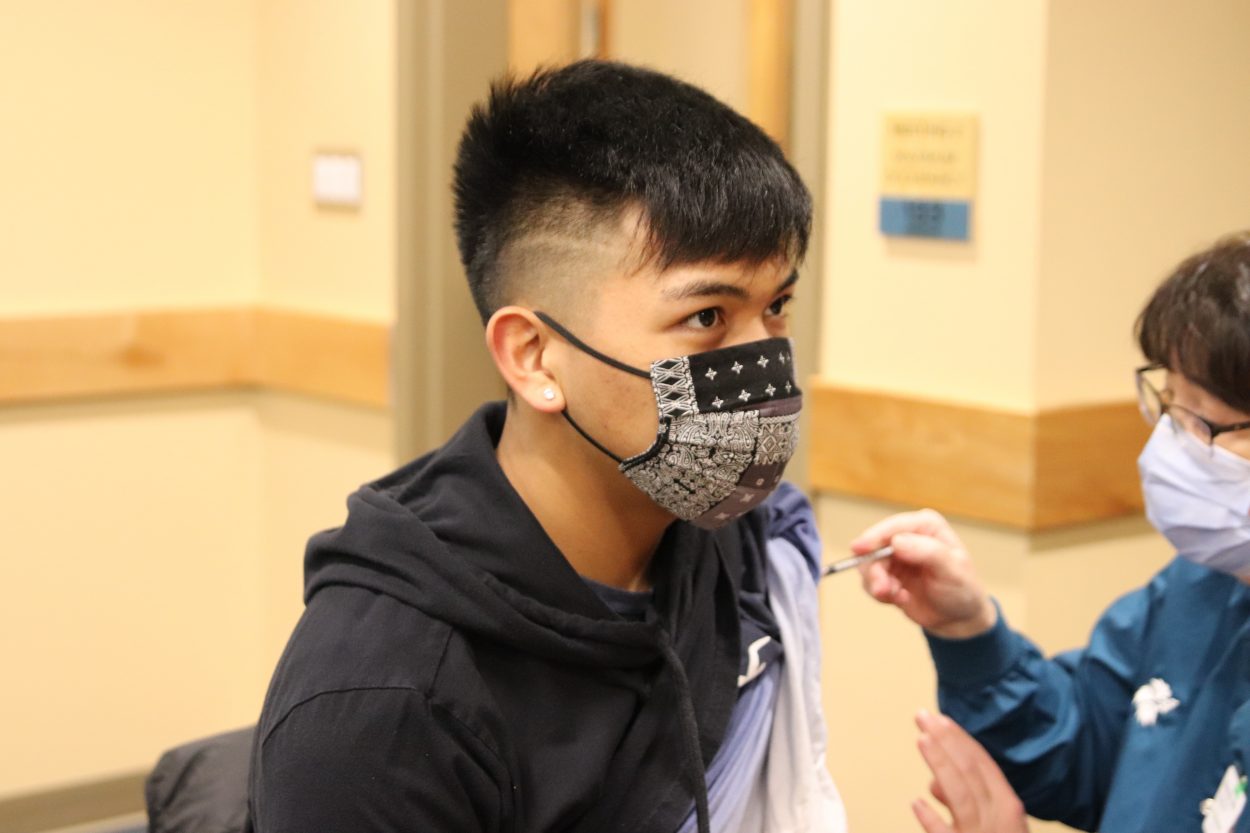
The latest modeling from the US Centers for Disease Control shows a steep decline in coronavirus infections in the United States — provided that residents continue to vaccinate, and wear masks and practice social distancing where appropriate. The pandemic — as we’ve experienced it over the past 14 months — could be under control by July.
Part of the strategy involves vaccinating as many eligible people as possible, and that now includes children aged 12 and up.
KCAW’s Robert Woolsey recently spoke with SEARHC chief medical officer Dr. Elliot Bruhl to hear his views on the importance of vaccinating children to end the pandemic.
Note: Listen to an extended interview with Dr. Elliot Bruhl.
Even when looking at the exponential decline in the infection rate in the United States that vaccination has helped bring about, Bruhl is cautious about forecasting any sort of “all clear.”
Southeast Alaska has unique circumstances that put it outside of traditional modeling.
Note: See the latest coronavirus infection modeling from the US Centers for Disease Control and Prevention (5-19-21).
“In Southeast Alaska, you know, we have isolated populations of people,” said Bruhl. “And then we have people coming in from the outside, which at times has protected us in the last year and a half. And other times it’s exposed us.”
He points to the recent outbreak of infections at a high school wrestling tournament in Ketchikan, which brought cases back to Sitka and Mt. Edgecumbe high schools.
The key to controlling these “bursts” of infection among unvaccinated populations, is to vaccinate them — an option that has been available for young people aged 12 and up only since May 10.
The alternative is to limit the activities of students — as was done early in the pandemic. Bruhl sees this as harmful — both medically and socially.
“Young people need to participate in these kinds of activities,” he said. “It’s essential to their well-being that they’re involved in extracurricular activities. And yet when you have an outbreak like this — not only does it affect them, but more importantly it affects the whole society that we’re living in. It affects our economy, the ability of us to market ourselves as a safe place for visitors. It affects our ability to keep our schools open, and our daycares, and our businesses. It affects our ability to safely navigate the community without a mask, which is important to everyone’s sense of well-being and not feeling depressed.”
Bruhl was a practicing physician in Southeast for years before entering hospital management. This is not the first time he’s encountered “vaccine hesitancy” in his practice. While no drug — or any medical procedure, for that matter — is without some risk, Bruhl says the new coronavirus vaccines are built on decades of research, and centuries of healthcare practice, and they are the “arrows in the quiver” that are going to end this pandemic, and prevent future ones.
“There has never been a medication, or a public health intervention that has been more effective at improving the health of human beings than vaccination. And that goes back to the 1790s, when we first started vaccinating people for smallpox, and it’s true, all the way up through the 20th century. And in all of that time, there has never been a vaccine that has been as intensely studied and intensely monitored for safety as this vaccine.”
The number of people who need to be vaccinated to end the pandemic is a bit of a moving target. Bruhl says it is around 70-percent. Sitka has already topped that goal in its adult population, which is why the emphasis is now shifting to kids. “The overall approach needs to be a little less hand-wringing about the statistics,” he says, “and a little more determination around simply moving forward with our vaccination efforts.” And that is what will ultimately put the pandemic behind us, whether it’s this July or beyond.
“So what the end game looks like, is that we manage to vaccinate a substantial enough portion of the population, that epidemic spread no longer becomes realistic,” he said.
And lastly, there’s the idea that every parent understands, that we won’t feel safe until our children are safe. “There are a lot of good reasons to vaccinate our kids,” says Bruhl, “not the least of which is that we love them and want them to stay healthy.”






























